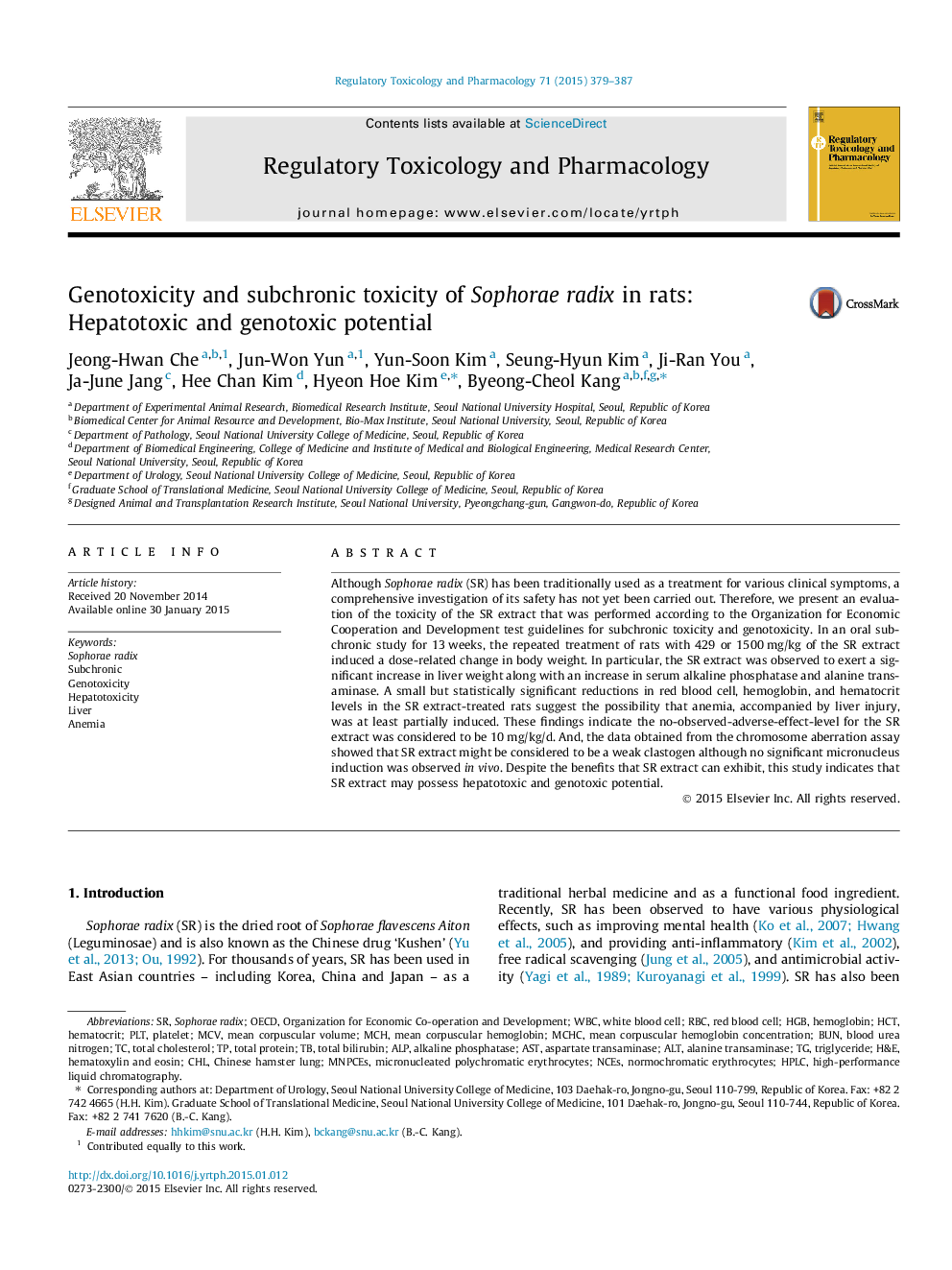| Article ID | Journal | Published Year | Pages | File Type |
|---|---|---|---|---|
| 5856646 | Regulatory Toxicology and Pharmacology | 2015 | 9 Pages |
â¢Subchronic exposure of Sophorae radix reduced body weight gain.â¢Serum ALP and ALT were significantly increased by Sophorae radix.â¢Sophorae radix exerted significant changes of indicators associated with anemia.â¢Sophorae radix showed genotoxic potential in chromosome aberration assay.
Although Sophorae radix (SR) has been traditionally used as a treatment for various clinical symptoms, a comprehensive investigation of its safety has not yet been carried out. Therefore, we present an evaluation of the toxicity of the SR extract that was performed according to the Organization for Economic Cooperation and Development test guidelines for subchronic toxicity and genotoxicity. In an oral subchronic study for 13Â weeks, the repeated treatment of rats with 429 or 1500Â mg/kg of the SR extract induced a dose-related change in body weight. In particular, the SR extract was observed to exert a significant increase in liver weight along with an increase in serum alkaline phosphatase and alanine transaminase. A small but statistically significant reductions in red blood cell, hemoglobin, and hematocrit levels in the SR extract-treated rats suggest the possibility that anemia, accompanied by liver injury, was at least partially induced. These findings indicate the no-observed-adverse-effect-level for the SR extract was considered to be 10Â mg/kg/d. And, the data obtained from the chromosome aberration assay showed that SR extract might be considered to be a weak clastogen although no significant micronucleus induction was observed in vivo. Despite the benefits that SR extract can exhibit, this study indicates that SR extract may possess hepatotoxic and genotoxic potential.
